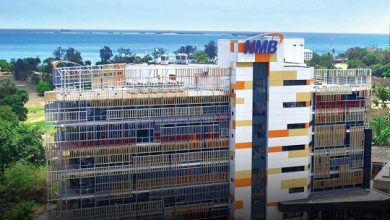Bond market liquidity drives asset prices

DAR ES SALAAM: LIQUIDITY is flowing freely in the bond market, pushing asset prices higher as investors scramble to secure returns amid stable policy rates and abundant cash reserves.
The surge in demand reflects a growing appetite for both fixed income and equities, in a financial system flush with confidence yet increasingly sensitive to shifts in market sentiment.
Alpha Capital Head of Business Development and Customer Service Geofrey Kamugisha told Daily News yesterday that such behaviour indicates a strategic preference for locking in current yields amid expectations of declining policy rates.
“This inversion suggests that investors, particularly institutional ones, are aggressively chasing 365-day paper, valuing certainty of return over nominal yield,” Mr Kamugisha said.
The Bank of Tanzania, last Wednesday, offered Treasury Bills across four tenors: 35, 91, 182 and 364 days. All tenors were oversubscribed, continuing the strong demand observed throughout the third quarter.
Notably, the 364-day bill’s weighted average yield (WAY) fell below that of the shorter tenors, with the 35-day at 6.1261 per cent, the 91-day at 6.5261 per cent and the 182- day at 6.8114 per cent, while the 364-day bill stood at 5.6088 per cent.
He said first, the persistent oversupply of short-term liquidity, driven by accommodative monetary policy and strong external inflows, has left banks, insurers and pension funds flush with cash, seeking riskfree instruments to park funds.
Second, regulatory or balance-sheet requirements for low-risk holdings among institutional investors (notably insurers and banks) may have created concentrated demand at specific tenors.
And, third, forward rate expectations play a critical role as market participants appear to be pricing in a continued decline in policy rates and are therefore locking in current yields before further compression.
ALSO READ: High yields, high stakes: The July 2024 t-bond market unveiled
He said “this interpretation aligns” with the Monetary Policy Committee (MPC) statement released early this month, in which the BoT reaffirmed its Central Bank Rate (CBR) at 5.75 per cent for this last quarter, maintaining the 7-day interbank rate corridor between 3.75 per cent and 7.75 per cent.
“The MPC cited stable inflation, adequate domestic food supply and a favourable external environment as the primary rationale for sustaining its accommodative stance,” Mr Kamugisha said.
In operational terms, according to Alpha, the BoT has executed this policy through reverse repurchase agreements (reverse repos) to inject liquidity and a full allotment approach, allowing banks to access all liquidity they require at the policy rate.
“This injection has been offset periodically by repo operations to sterilise excess cash, creating a finely balanced liquidity environment that anchors short-term rates close to the CBR,” Alpha said.
The central bank’s monetary easing has been complemented by supportive fiscal operations and domestic gold purchases, further sustaining liquidity across the banking system.
The MPC’s decision to maintain its stance into this quarter reflects confidence that inflation will remain contained and that interest rate stability will continue to support private sector credit expansion and capital market growth.





